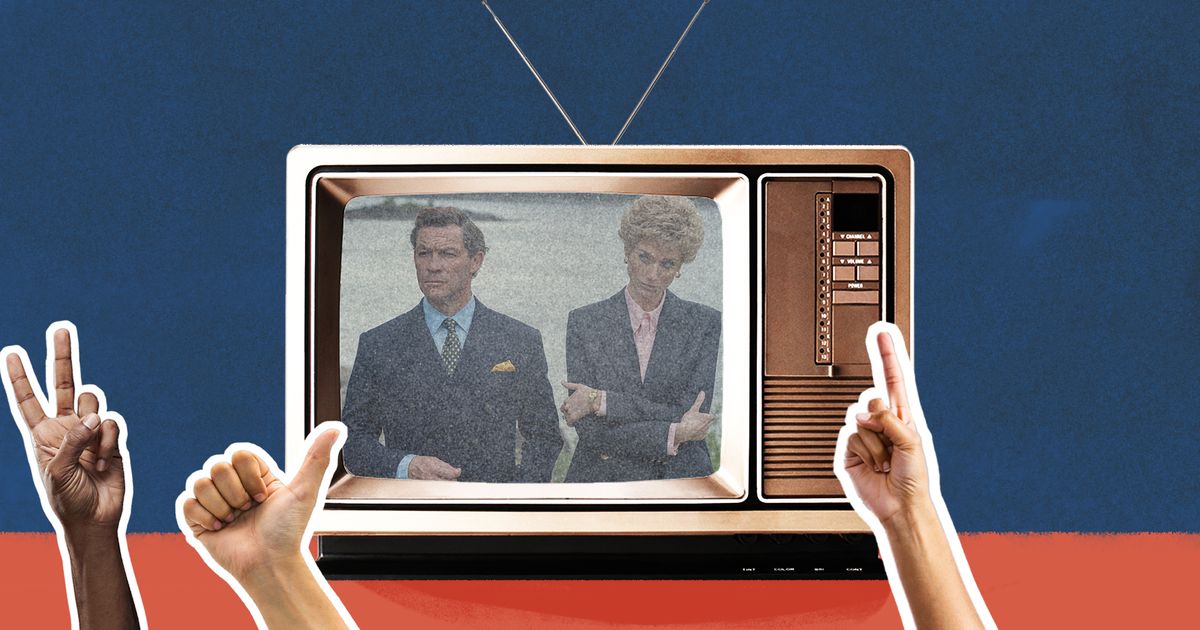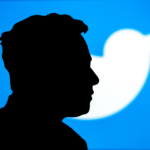The events depicted on Netflix’s “The Crown” are getting more and more recent, and in many cases, are already vividly imprinted in the public consciousness. That’s in large part because in real life, much of them played out on television and in other media.
Therefore, it’s no surprise media coverage is a prominent feature of the show’s fifth season, premiering Wednesday, which has now reached the events of the 1990s. In particular, this season covers the inevitable dissolution of the marriage between then-Prince Charles (played this season and in the show’s upcoming final season by Dominic West) and Princess Diana (Elizabeth Debicki), and the public confirmation of his long-suspected affair with Camilla Parker Bowles (Olivia Williams). (The series, a dramatization of the reign of Queen Elizabeth II, continues its tradition of featuring a new set of actors every two seasons. Imelda Staunton takes over from Olivia Colman as the queen.)
Several key events in Season 5 are modified re-creations of major media moments, such as exclusive TV interviews Charles and Diana each gave to tell their sides of the story and craft their public images. And perhaps the most anticipated event depicted in this season is an essentially verbatim reading of the infamous “Camillagate” or “Tampongate” transcript.
The role of media coverage has become integral to the show’s exploration of the British monarchy — just as it was highly relevant to real life in the 1990s, with the availability of more TV than ever before, and the encroachment of the 24-hour news cycle. That even becomes its own subplot this season, as a symbol of the rigid monarchy remaining behind the times. In one episode, the queen, at the suggestion of a tween Prince William (played by West’s real-life son Senan), gets a satellite dish installed. But feeling overwhelmed by the dozens of channels, some showing content she finds uncomfortable, she sticks with watching the BBC.
Here’s a look at some of the major media moments depicted in Season 5 of “The Crown.”
Andrew Morton’s book (1992) – Episode 2
The publication of journalist Andrew Morton’s 1992 biography, “Diana: Her True Story,” shook the world and accelerated the demise of Diana and Charles’ marriage. As the show depicts, Diana agreed to secretly participate in the book, an arrangement Morton only revealed after her death in 1997. He sent her questions by using one of her friends as an intermediary, and she sent back tape-recorded responses. In them, she revealed many of her marital troubles and mental health struggles for the first time, such as an eating disorder (which was detailed in Season 4 of “The Crown”) and several suicide attempts.
The Queen’s “annus horribilis” speech (1992) – Episode 4
In a rare moment of candor during a speech on Nov. 24, 1992, the Queen declared the year “annus horribilis.” It had been a year full of royal scandals: the separation of her son Prince Andrew and Sarah Ferguson, the Duchess of York; the divorce of her daughter Princess Anne and Mark Phillips; the fallout from Morton’s book; and a fire that caused significant damage to Windsor Castle.
“1992 is not a year on which I shall look back with undiluted pleasure,” she said in the speech. “In the words of one of my more sympathetic correspondents, it has turned out to be an ‘annus horribilis.’ I suspect that I am not alone in thinking it so. Indeed, I suspect that there are very few people or institutions unaffected by these last months of worldwide turmoil and uncertainty.”
The version of events presented in “The Crown” retains those two first lines, while modifying other parts of the speech.
For the Queen, the horrible year wasn’t even done. Just two weeks after the speech, Charles and Diana announced they were formally separating.
“Camillagate” or “Tampongate” (1993) – Episode 5
In case you need a refresher on this one, this refers to the scandal surrounding the secretly recorded phone conversation in which Charles infamously compared himself to a tampon, after telling Camilla he wished to “live inside your trousers.”
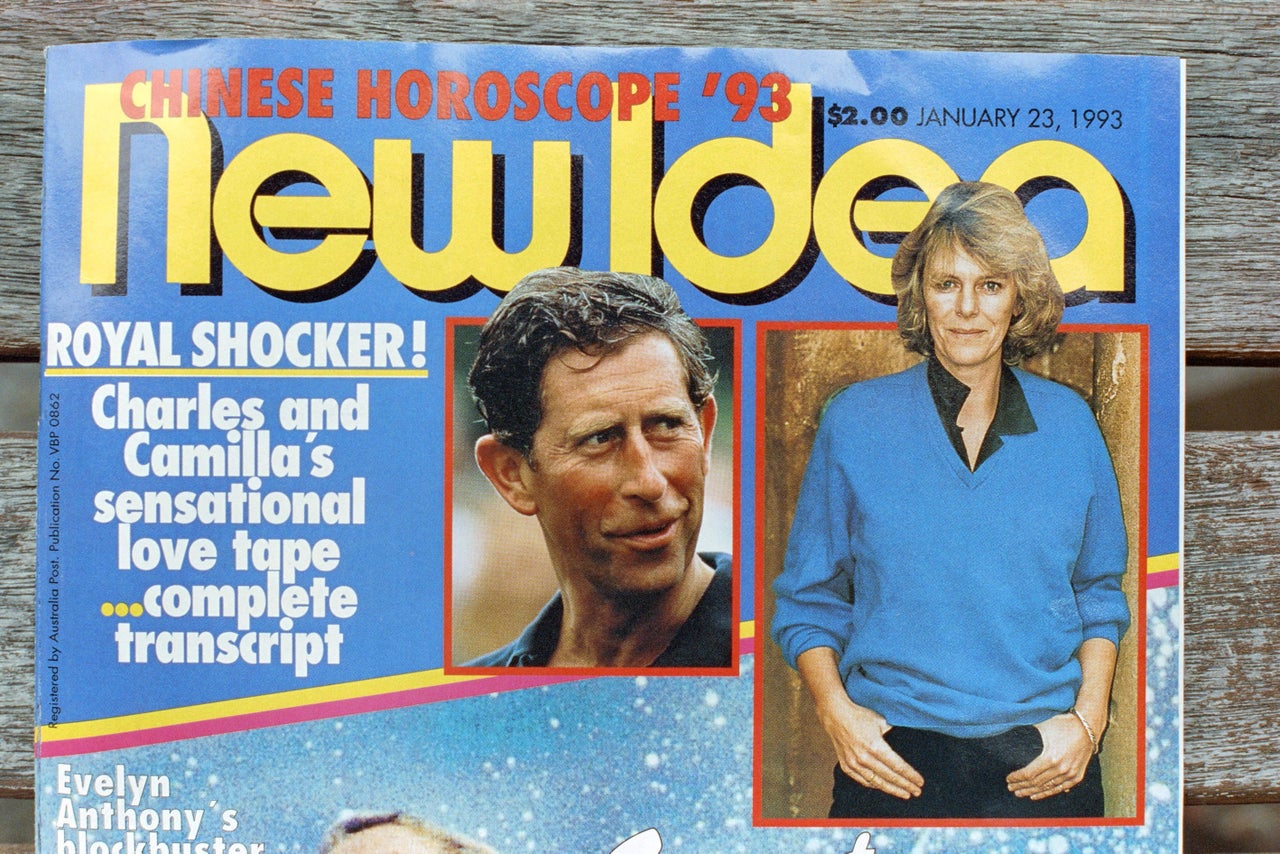
RICK RYCROFT via Getty Images
One night in December 1989, a lonely Prince Charles called up Camilla. The intimate and, at times, graphic phone call was picked up by an amateur radio operator. News accounts from the time differ on how exactly the recording was leaked to news outlets. The way “The Crown” tells it, the amateur radio operator gave the recording to the Daily Mirror, but editors at the tabloid decided it was too risky to publish at the time.
By January 1993, Charles and Diana were now separated. Excerpts of the conversation had been leaked to various news outlets. As British outlets weighed whether it was too salacious to publish, “New Idea,” an Australian magazine, went for it. Days later, the Daily Mirror decided to run the full transcript in its Sunday edition on Jan. 17, excerpts of which “The Crown” recreates almost exactly verbatim. The show combines a flashback to the original 1989 phone call with a montage of all of the characters uncomfortably reading their copy of the Daily Mirror transcript in 1993.
Charles’ interview on ITV (1994) – Episode 5
In an attempt to make the public despise him less, Prince Charles participated in a documentary on ITV, “Charles: The Private Man, the Public Role.” Hosted by journalist Jonathan Dimbleby, the program showed the prince at home and promoted his charity work. There were also the unavoidable questions about his fraught marriage. Charles claimed he had tried to remain faithful to Diana.
“Yes,” an extremely stiff Prince Charles told Dimbleby, before pausing and adding: “until it became clear that the marriage had irretrievably broken down, us both having tried.”
On “The Crown,” the line is changed to: “Yes, until it became obvious that the marriage couldn’t be saved, both of us having done our best.”
It was his first public admission to cheating on Diana. But he did not name Camilla directly — awkwardly referring to her as “a great friend of mine” and one of “a large number of friends I’m terribly lucky to have.”
“She has been a friend for a very long time,” he reiterated, before again adding: “along with a lot of other friends.”
Diana’s revenge dress (1994) – Episode 5
The night the documentary aired, on June 29, 1994, Diana made a statement of her own, without having to say a word. Attending a Vanity Fair event at London’s Serpentine Gallery, she wore a black silk, off-the-shoulder dress. Designed by Christina Stambolian, it quickly became known as “Diana’s revenge dress.”
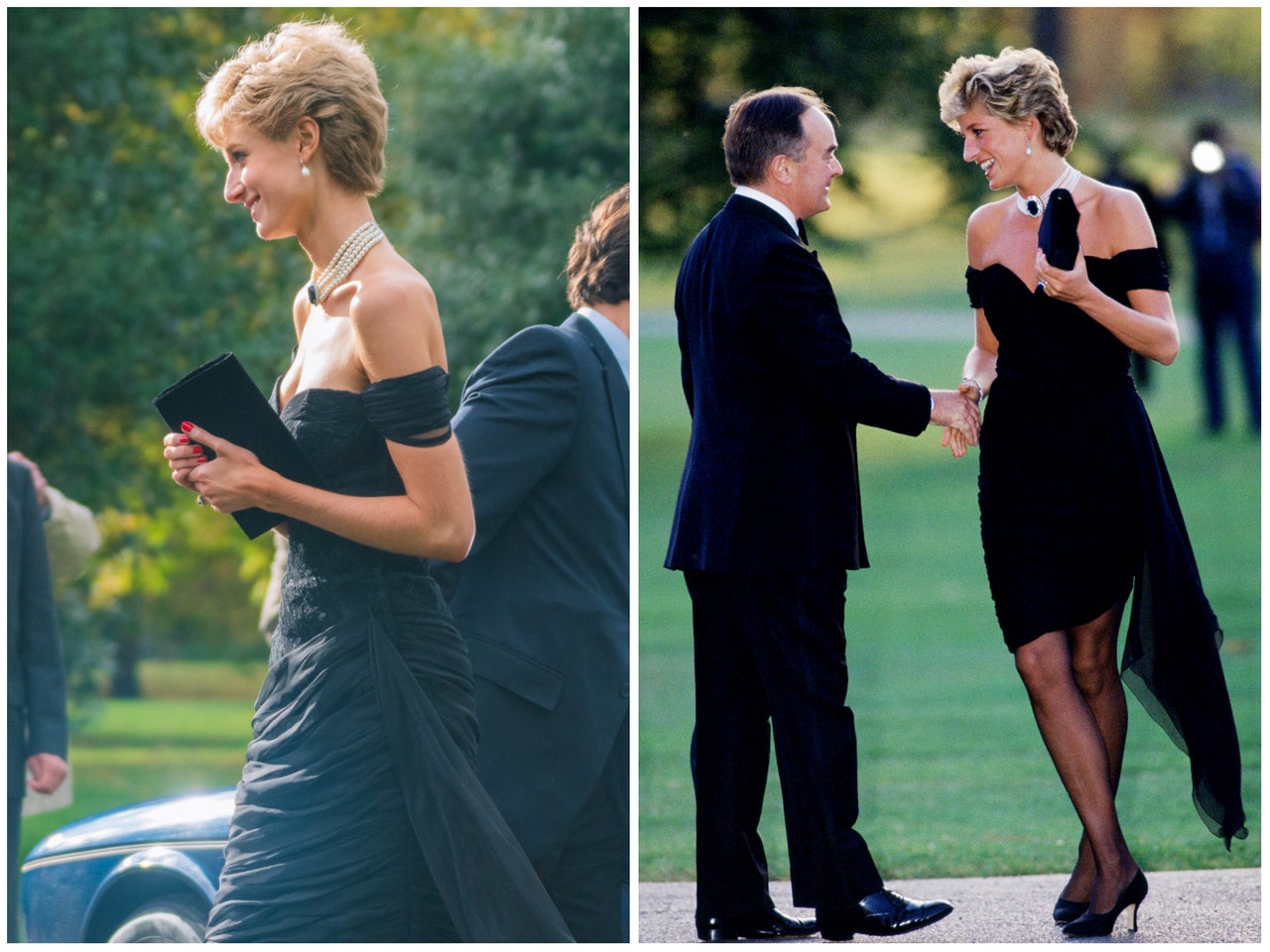
Keith Bernstein/Netflix; Tim Graham/Getty Images
According to former Vanity Fair and New Yorker editor Tina Brown’s 2007 biography of Diana, Diana initially declined the invitation. But two days before the event, as the interview excerpt of Charles admitting to adultery dominated news headlines, she decided to attend after all. According to friends quoted by Brown, Diana seemed to know exactly what she was doing.
“At about the moment the Prince of Wales was confessing his adultery on national TV, his wife was stepping out of a limo at Vanity Fair’s annual June fundraising event for the Serpentine Gallery in Kensington Gardens,” Brown wrote in “The Diana Chronicles,” describing how later, fashion editors would also refer to it as “her fuck-you dress.”
“The picture of her that blew Charles off the front pages the next morning provided the perfect context for discussing the only line in the Dimbleby broadcast that anyone remembered — the one about adultery,” Brown continued.
Through her iconic style, Diana shifted the narrative back to herself — a theme throughout her life in the public eye.
Diana’s interview on BBC’s Panorama (1995) – Episodes 7 and 8
Diana had been weighing various offers to do a TV interview of her own, in response to Charles’ 1994 TV special. She eventually agreed to speak with Martin Bashir (played by Prasanna Puwanarajah on “The Crown”) for the BBC’s investigative reporting show “Panorama.” Filmed in November 1995 under top-secret conditions, she spoke in detail about her eating disorder, having postpartum depression and other mental health crises she experienced due to her marriage and the isolation she felt while part of the royal family.
The bombshell interview is probably best remembered for an infamous line, which also appears in the show’s version. Bashir asks her: “Do you think Mrs. Parker Bowles was a factor in the breakdown of your marriage?” Diana replies: “Well, there were three of us in this marriage, so it was a bit crowded.”
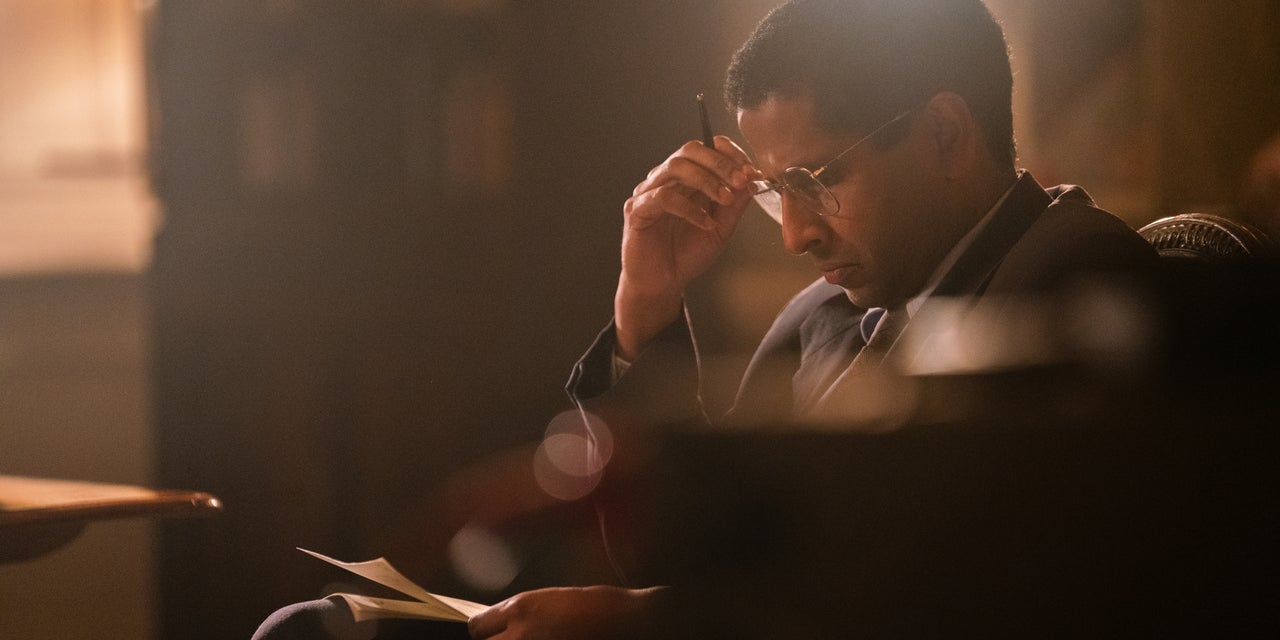
Around the time of the program’s 25th anniversary in 2020, the BBC opened an investigation into Bashir’s unethical practices in securing the interview. As explored on “The Crown,” in trying to gain their trust, Bashir misled Diana and her brother. He presented them with forged financial documents falsely purporting to show links between her private secretary, Charles’ private secretary, and the U.K. security agencies who were allegedly surveilling her.
Last year, the head of the BBC said the full interview will never air again in light of the ethical breach. In September, the BBC announced it had donated the £1.4 million it earned from the TV special to charitable causes associated with Diana.
If you’re struggling with an eating disorder, call the National Eating Disorder Association hotline at 1-800-931-2237.
